-
Notifications
You must be signed in to change notification settings - Fork 31
/
Copy pathapplications.qmd
614 lines (393 loc) · 18 KB
/
applications.qmd
1
2
3
4
5
6
7
8
9
10
11
12
13
14
15
16
17
18
19
20
21
22
23
24
25
26
27
28
29
30
31
32
33
34
35
36
37
38
39
40
41
42
43
44
45
46
47
48
49
50
51
52
53
54
55
56
57
58
59
60
61
62
63
64
65
66
67
68
69
70
71
72
73
74
75
76
77
78
79
80
81
82
83
84
85
86
87
88
89
90
91
92
93
94
95
96
97
98
99
100
101
102
103
104
105
106
107
108
109
110
111
112
113
114
115
116
117
118
119
120
121
122
123
124
125
126
127
128
129
130
131
132
133
134
135
136
137
138
139
140
141
142
143
144
145
146
147
148
149
150
151
152
153
154
155
156
157
158
159
160
161
162
163
164
165
166
167
168
169
170
171
172
173
174
175
176
177
178
179
180
181
182
183
184
185
186
187
188
189
190
191
192
193
194
195
196
197
198
199
200
201
202
203
204
205
206
207
208
209
210
211
212
213
214
215
216
217
218
219
220
221
222
223
224
225
226
227
228
229
230
231
232
233
234
235
236
237
238
239
240
241
242
243
244
245
246
247
248
249
250
251
252
253
254
255
256
257
258
259
260
261
262
263
264
265
266
267
268
269
270
271
272
273
274
275
276
277
278
279
280
281
282
283
284
285
286
287
288
289
290
291
292
293
294
295
296
297
298
299
300
301
302
303
304
305
306
307
308
309
310
311
312
313
314
315
316
317
318
319
320
321
322
323
324
325
326
327
328
329
330
331
332
333
334
335
336
337
338
339
340
341
342
343
344
345
346
347
348
349
350
351
352
353
354
355
356
357
358
359
360
361
362
363
364
365
366
367
368
369
370
371
372
373
374
375
376
377
378
379
380
381
382
383
384
385
386
387
388
389
390
391
392
393
394
395
396
397
398
399
400
401
402
403
404
405
406
407
408
409
410
411
412
413
414
415
416
417
418
419
420
421
422
423
424
425
426
427
428
429
430
431
432
433
434
435
436
437
438
439
440
441
442
443
444
445
446
447
448
449
450
451
452
453
454
455
456
457
458
459
460
461
462
463
464
465
466
467
468
469
470
471
472
473
474
475
476
477
478
479
480
481
482
483
484
485
486
487
488
489
490
491
492
493
494
495
496
497
498
499
500
501
502
503
504
505
506
507
508
509
510
511
512
513
514
515
516
517
518
519
520
521
522
523
524
525
526
527
528
529
530
531
532
533
534
535
536
537
538
539
540
541
542
543
544
545
546
547
548
549
550
551
552
553
554
555
556
557
558
559
560
561
562
563
564
565
566
567
568
569
570
571
572
573
574
575
576
577
578
579
580
581
582
583
584
585
586
587
588
589
590
591
592
593
594
595
596
597
598
599
600
601
602
603
604
605
606
607
608
609
610
611
612
613
614
---
title: "Climate Machine Learning Applications"
subtitle: "ICCS Summer school 2023"
format:
revealjs:
embed-resources: true
slide-number: true
chalkboard: false
preview-links: auto
history: false
highlight-style: monokai
code-line-numbers: false
logo: https://iccs.cam.ac.uk/sites/iccs.cam.ac.uk/files/logo2_2.png
render-on-save: true
theme: [dark, custom.scss]
revealjs-plugins:
- attribution
authors:
- name: <b><u>Jack Atkinson</u></b>
orcid: 0000-0001-5001-4812
affiliations: ICCS/Cambridge
- name: Jim Denholm
orcid: 0000-0002-2389-3134
affiliations: Cambridge
date: last-modified
bibliography: references.bib
---
# Teaching Material Recap
## Teaching Material Recap {.smaller}
Over the ML sessions at the summer school we have learnt about:
- Classification - categorising items based on information
- Regression - using information to predict another value
using:
- ANNs - using input _features_ to make predictions
- CNNs - using _image-like_ data as an input
# Considerations
## _Image-like_ data
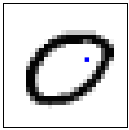{.absolute width=30% top=20% left=35%}
::: {.fragment}
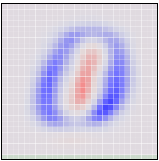{.absolute width=30% top=20% left=35%}
:::
::: {.fragment}
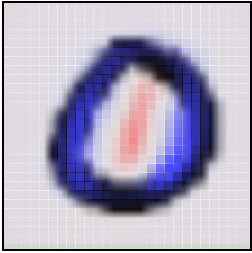{.absolute width=30% top=20% left=35%}
:::
::: {.fragment}
{.absolute width=70% top=15% left=15%}
:::
::: {.attribution}
Gravity waves image from @sheridan2017mountain.
MNIST Images from [colah](https://colah.github.io/posts/2014-10-Visualizing-MNIST/)
:::
::: aside
NB: [colah provides an excellent article](https://colah.github.io/posts/2014-10-Visualizing-MNIST/) trying to understand MNIST NNs.
:::
# Potential Applications
## Applications in geosciences: {.smaller}
See review of @kashinath2021physics
:::: {.columns}
::: {.column width="50%"}
- Emulation of existing parameterisations
[@espinosa2022machine]
<br>
- Data-driven paramterisations
[@yuval2020stable; @giglio2018estimating]
<br>
- Downscaling/Upsampling
[@harris2022generative]
<br>
:::
::: {.column width="50%"}
- Time series forecasting
[@shao2021deep]
<br>
- Equation discovery
[@zanna2020data; @ma2021data]
<br>
- Complete forecasting
[@rasp2020weatherbench; @pathak2022fourcastnet; @bi2022pangu]
<br>
:::
::::
## Climate Modelling
Climate models are large, complex, many-part systems.
<br>

## Paramterisations {.smaller}
- Parameterisations are typically expensive
- Microphysics and Radiation are top offenders
- Replace parameterisations with NNs
- emulation of existing parameterisation
e.g. @espinosa2022machine
- data-driven parameterisations
- capture missing physics?
- train with a high-resolution model
access the benefits of subgrid model without the cost(?)
::: {.notes}
- data-driven may suffer from a lack of data for training?
:::
## Machine Learning {.smaller auto-animate=true}
We typically think of Deep Learning as an end-to-end process;
a black box with an input and an output.
{style="border-radius: 50%;" .absolute top=35% left=30% width=40% height=40%}
{.absolute top=37.5% left=5.5% width=25%}
[Who's that Pokémon?]{.absolute top=32.5% left=4% width=25% style="text-align:center;"}
[$$\begin{bmatrix}\vdots\\a_{23}\\a_{24}\\a_{25}\\a_{26}\\a_{27}\\\vdots\\\end{bmatrix}=\begin{bmatrix}\vdots\\0\\0\\1\\0\\0\\\vdots\\\end{bmatrix}$$]{.absolute top=30% right=8.5% width=25%}
[It's Pikachu!]{.absolute top=27.5% right=8.5% width=25% style="text-align:center;"}
::: {.attribution}
Neural Net by [3Blue1Brown]( https://www.3blue1brown.com/topics/neural-networks ) under [*fair dealing*](https://www.gov.uk/guidance/exceptions-to-copyright).
Pikachu © *The Pokemon Company*, used under [*fair dealing*]( https://www.gov.uk/guidance/exceptions-to-copyright ).
:::
## Machine Learning in Science {.smaller auto-animate=true}

{style="border-radius: 50%;" .absolute bottom=5% left=56% width=25% height=25%}
::: {.attribution}
Neural Net by [3Blue1Brown]( https://www.3blue1brown.com/topics/neural-networks ) under [*fair dealing*](https://www.gov.uk/guidance/exceptions-to-copyright).
Pikachu © *The Pokemon Company*, used under [*fair dealing*]( https://www.gov.uk/guidance/exceptions-to-copyright ).
:::
## Replacing physics-based components {.smaller}
2 approaches:
* emulation, or
* data-driven.
Additional challenges:
* Physical compatibility
* Physics-based models have conservation laws
Required for accuracy and stability
* Language interoperation
{.absolute top=30% right=7% style="width: 15%; aspect-ratio: 1 / 1; object-fit: cover; object-position: 0 0;"}
{.absolute width=15% top=50% right=15%}
{.absolute width=15% top=50% right=0%}
## Downscaling {.smaller}
- Can we get information for _'free'_?
- Train to predict _'image'_ from coarsened version.
- Topography?
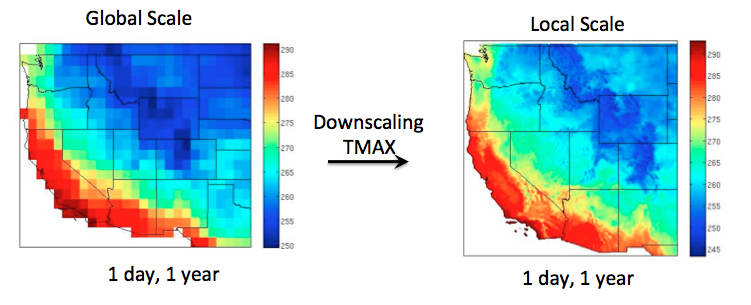
::: {.attribution}
Image by [Earth Lab](https://www.earthdatascience.org/courses/use-data-open-source-python/hierarchical-data-formats-hdf/intro-to-MACAv2-cmip5-data/)
:::
## Forecasting {.smaller}
- Time-series
- popular use
- Recurrent Neural Nets
- Complete weather
- FourCastNet, Pangu-Weather, GraphCast
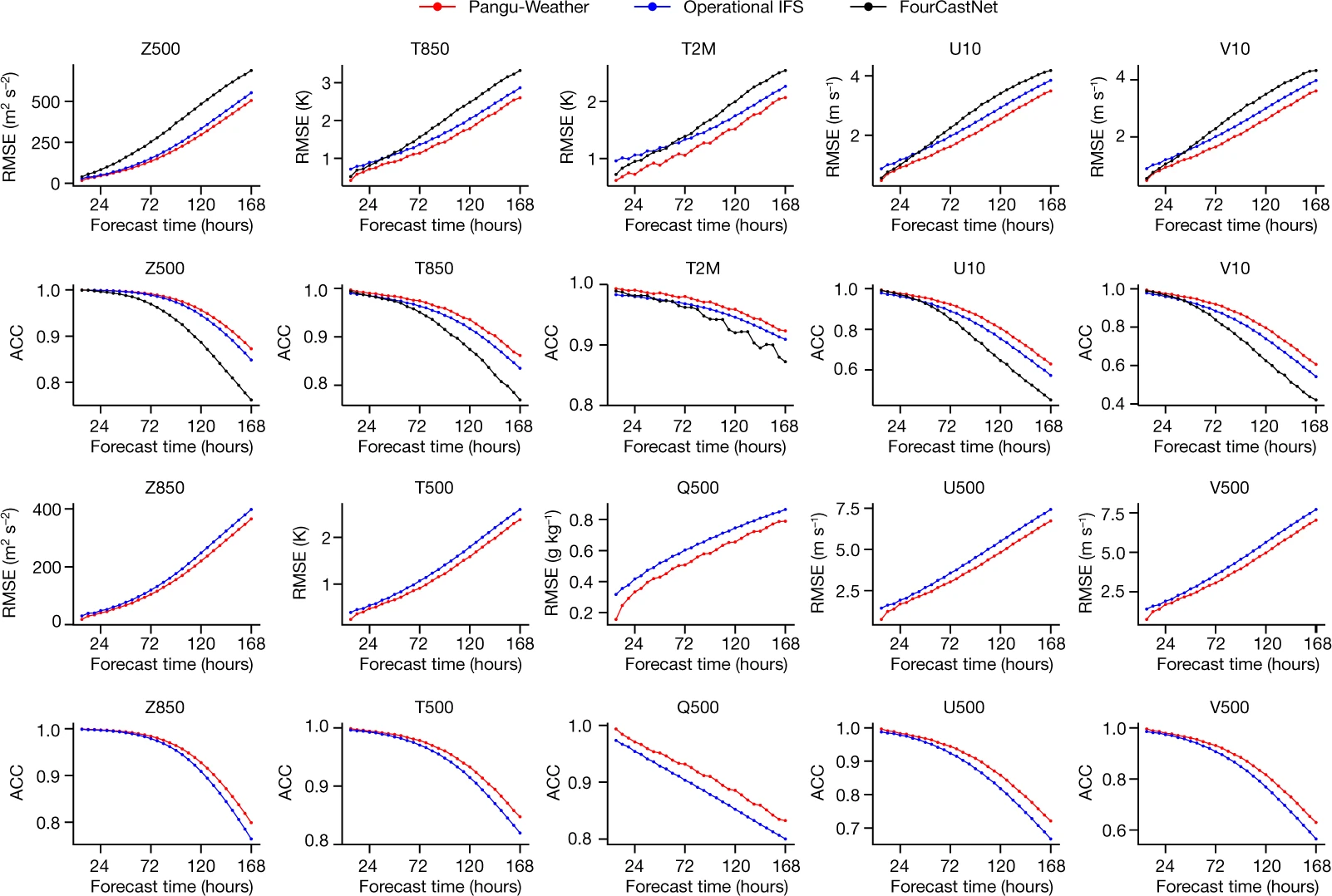{.absolute bottom=0% left=0% width=48%}
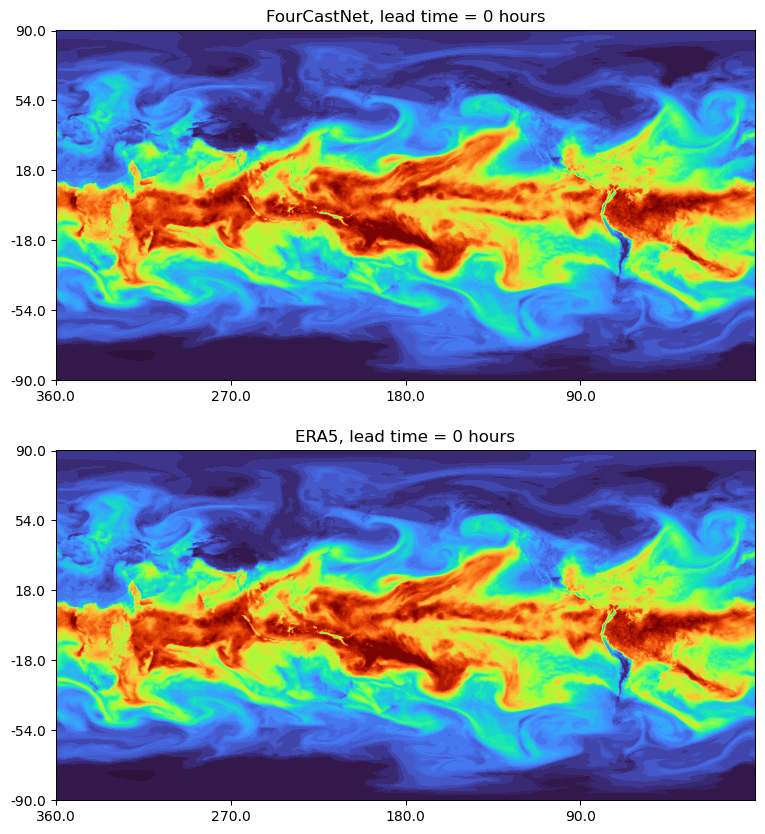{.absolute top=20% right=0% width=40%}
::: {.attribution}
Line plot image from @bi2023accurate
Global image from NVIDIA FourCastNet
:::
::: {.notes}
Speaker notes go here.
:::
# Challenges
## Training data - considerations {.smaller}
How should we prepare our training data?
- Cyclic data?
- e.g. diurnal, annual, other
- use time as an input
- use a \[daily\] average
## Training data - implications {.smaller}
- A NN only knows as much as its training data.
- How do you predict the 1/100 event? 1/1000 event?
- How do you train for a changing climate?
- And tipping points?
{.absolute top=20% right=0% width=40%}
::: {.attribution}
Image by NASA
:::
## Structure/Physics-informed approach {.smaller}
There is a wide variety of ways to structure a Neural Net.
What is the most appropriate for our application.
What are potentiall pitfalls - don't go in blind with an ML hammer!
Case study of @ukkonen2022exploring for emulating radiative transfer:
- Recurrent Neural Network reflects physical propogation,
- and prevents spurious correlations.
## Physical Compatibility {.smaller}
Many ML applications in climate science are more complex than other _classical_ applications.
- our ML useage is often not end-to-end
- A stable/accurate offline model will not neccessarily be stable online [@furner2023iterative].
Your NN is perfectly happy to have 'negative rain'.
- Even with heavy penalties
- This is not a new problem in numerical parameterisations.
- How is it best to enforce physical constraints in NNs.
## Redeployability {.smaller}
How easy is it to redeploy a ML model? - exactly _what_ has it learned?
- Locked to a geographical location?
- Locked to numerical model?
- Locked to a specific grid!?
- How do we handle inputs from different models?
## Interfacing {.smaller}
Replacing physics-based components of larger models (emulation or data-driven) requires care.
- Language interoperation
- Physical compatibility
{style="border-radius: 50%;" .absolute top=40% left=30% width=40%}
::: {.attribution}
[Mathematical Bridge](https://en.wikipedia.org/wiki/Mathematical_Bridge)
by [cmglee](https://commons.wikimedia.org/wiki/User:Cmglee)
used under [CC BY-SA 3.0](https://creativecommons.org/licenses/by-sa/3.0/deed.en)
:::
[comment: short python logo]: 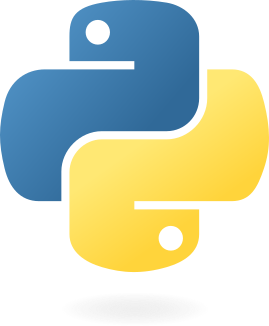{.absolute top=0 left=0 width="50"}
{.absolute top=50% left=0 width=30%}
{style="background-image: radial-gradient(gray 40%, black);" .absolute top=65% left=5% width=20%}
{.absolute top=75% left=7.5% width=15%}
{.absolute top=50% right=10% width=10%}
{.absolute top=65% right=0% height=10%}
{.absolute top=74.5% left=70% height=5%}
{style="border-radius: 20%;" .absolute bottom=4.5% right=0 width=10%}
{.absolute bottom=4.5% right=12.75% width=7%}
{.absolute bottom=4.5% left=70% width=7%}
::: {.notes}
Emulation and data-driven is a focus of several of out projects.
Models typically in Fortran
ML typically in Python
Challenge of interoperation
:::
## Interfacing - Possible solutions {.smaller}
Ideally need to:
- Not generate excess additional work for user
- Not require excess knowledge of computing
- Minimal learning curve
- Not add excess dependencies
- Be easy to maintain
- Maximise performance
::: {.notes}
1. No re-writing net after you have already done and trained
2. For scientists doing science, not compsci
3. Run on HPC environments so minimal additional
4. Easily keep up to date
5. Simple to learn and deploy
6. Needs to be as efficient as possible
:::
## Interfacing - Possible solutions {.smaller}
- Implement a NN in Fortran
- Forpy/CFFI
- SmartSim/Pipes
- Fortran-Keras Bridge
::: {.notes}
:::
## Interfacing - Our Solution {.smaller}
{.absolute top=10% right=12.5% width=15%}
{.absolute top=20% right=30% width="35%" height="20%"}
{.absolute top=40% left=30% height="20%"}
{style="transform: rotate(270deg);" .absolute top=70% left=30% width="18%" height="10%"}
{.absolute top=18% left=0% height="22%"}
{style="transform: rotate(270deg);" .absolute top=33% left=14% width="10%" height="25%"}
:::{style="text-align: center; color: black;" .absolute top="27%" left="6.5%"}
Python
env
:::
:::{style="text-align: center;" .absolute top="44%" left="44%"}
Python
runtime
:::
{style="background-image: radial-gradient(gray 40%, black);" .absolute bottom=12.5% right=22% height=10%}
{.absolute bottom=10% left=82% height=15%}
::: {.fragment .fade-in}
{style="transform: scaleY(-1) rotate(130deg); filter:hue-rotate(215deg);" .absolute top=37% left=78% width="35%" height="20%"}
:::
::: {.fragment .fade-in}
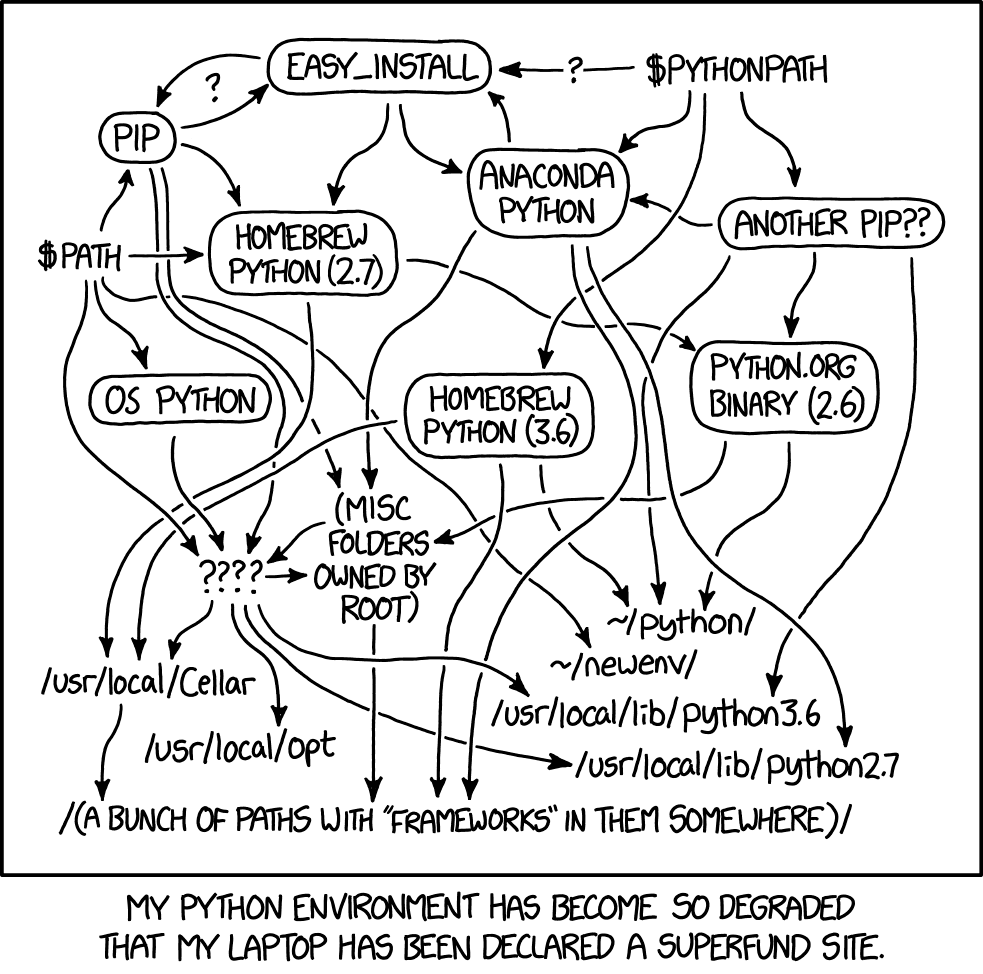{style="background-image: radial-gradient(gray 40%, black);" .absolute bottom=8% left=0% height=80%}
::: {.attribution}
[xkcd #1987](https://xkcd.com/1987/)
by Randall Munroe,
used under [CC BY-NC 2.5](https://creativecommons.org/licenses/by-nc/2.5/)
:::
:::
## Interfacing - Our Solution {.smaller}
Ftorch and TF-lib
- <span style="color:red;">Use Fortran's intrinsic C-bindings to access the C/C++ APIs provided by ML frameworks</span>
- Performance
- Ease of use
- Use frameworks' implementations directly
::: {.notes}
**MOTIVATION**
Driven by disadvantages of the above.
Make it **quick** and **easy** for researchers to **correctly** deploy their models.
- intrinsic => readily available
- highly functional
:::
## Interfacing - Our Solution {.smaller}
Ftorch and TF-lib
- Use Fortran's intrinsic C-bindings to access the C/C++ APIs provided by ML frameworks
- <span style="color:red;">Performance</span>
- avoids python runtime
- no-copy transfer (shared memory)
- Ease of use
- Use frameworks' implementations directly
::: {.notes}
Copying is one of the most expensive operations you can do. Avoid this!
:::
## Interfacing - Our Solution {.smaller}
Ftorch and TF-lib
- Use Fortran's intrinsic C-bindings to access the C/C++ APIs provided by ML frameworks
- Performance
- <span style="color:red;">Ease of use</span>
- pleasant API (see next slides)
- utilities for generating TorchScript/TF module provided
- examples provided
- Use frameworks' implementations directly
::: {.notes}
:::
## Interfacing - Our Solution {.smaller}
Ftorch and TF-lib
- Use Fortran's intrinsic C-bindings to access the C/C++ APIs provided by ML frameworks
- Performance
- Ease of use
- <span style="color:red;">Use frameworks' implementations directly</span>
- feature support
- future support
- direct translation of python models ^[Caveats exist if using exotic non-Torch features.]
::: {.notes}
- NB Currently inference only - build and train in python
:::
## Code Example - PyTorch
- Take model file
- Save as torchscript
```{.python}
import torch
import my_ml_model
trained_model = my_ml_model.initialize()
scripted_model = torch.jit.script(model)
scripted_model.save("my_torchscript_model.pt")
```
## Code Example - PyTorch
Neccessary imports:
```{.fortranfree .code-overflow-wrap}
use, intrinsic :: iso_c_binding, only: c_int64_t, c_float, c_char, &
c_null_char, c_ptr, c_loc
use ftorch
```
Loading a pytorch model:
```{.fortranfree .code-overflow-wrap}
model = torch_module_load('/path/to/saved/model.pt'//c_null_char)
```
## Code Example - PyTorch
Tensor creation from Fortran arrays:
```{.fortranfree .code-overflow-wrap}
! Fortran variables
real, dimension(:,:), target :: SST, model_output
! C/Torch variables
integer(c_int), parameter :: dims_T = 2
integer(c_int64_t) :: shape_T(dims_T)
integer(c_int), parameter :: n_inputs = 1
type(torch_tensor), dimension(n_inputs), target :: model_inputs
type(torch_tensor) :: model_output_T
shape_T = shape(SST)
model_inputs(1) = torch_tensor_from_blob(c_loc(SST), dims_T, shape_T &
torch_kFloat64, torch_kCPU)
model_output = torch_tensor_from_blob(c_loc(output), dims_T, shape_T, &
torch_kFloat64, torch_kCPU)
```
## Code Example - PyTorch
Running the model
```{.fortranfree .code-overflow-wrap}
call torch_module_forward(model, model_inputs, n_inputs, model_output_T)
```
Cleaning up:
```{.fortranfree .code-overflow-wrap}
call torch_tensor_delete(model_inputs(1))
call torch_module_delete(model)
```
::: {.notes}
We recommend PT
TF has a weakness that prior knowledge of model structure is required.
:::
# Further information
## References {.smaller}
::: {#refs}
:::
## Slides
These slides can be viewed at:
[https://cambridge-iccs.github.io/practical-ml-with-pytorch](https://cambridge-iccs.github.io/practical-ml-with-pytorch)
The html and source can be found [on GitHub](https://github.com/Cambridge-ICCS/practical-ml-with-pytorch).
## Contact {.smaller}
For more information we can be reached at:
:::: {.columns}
::: {.column width="50%"}
{{< fa pencil >}} \ Jack Atkinson
{{< fa solid person-digging >}} \ [ICCS/UoCambridge](https://iccs.cam.ac.uk/about-us/our-team)
{{< fa solid globe >}} \ [jackatkinson.net](https://jackatkinson.net)
{{< fa solid envelope >}} \ [jwa34[AT]cam.ac.uk](mailto:jwa34@cam.ac.uk)
{{< fa brands github >}} \ [jatkinson1000](https://github.com/jatkinson1000)
{{< fa brands mastodon >}} \ [\@jatkinson1000\@fosstodon.org](https://fosstodon.org/@jatkinson1000)
:::
::: {.column width="50%"}
{{< fa pencil >}} \ Jim Denholm
{{< fa solid person-digging >}} \ UoCambridge
{{< fa solid globe >}} \ [linkedin](https://uk.linkedin.com/in/jim-denholm-13043b189)
{{< fa solid envelope >}} \ [jd949[AT]cam.ac.uk](mailto:jd949@cam.ac.uk)
{{< fa brands github >}} \ [jdenholm](https://github.com/jdenholm)
:::
::::
You can also contact the ICCS, [make a resource allocation request](https://iccs.cam.ac.uk/resources-vesri-members/resource-allocation-process), or visit us at the [Summer School RSE Helpdesk](https://docs.google.com/spreadsheets/d/1WKZxp3nqpXrIRMRkfFzc71sos-UD-Uy1zeab0c1p7Xc/edit#gid=0).